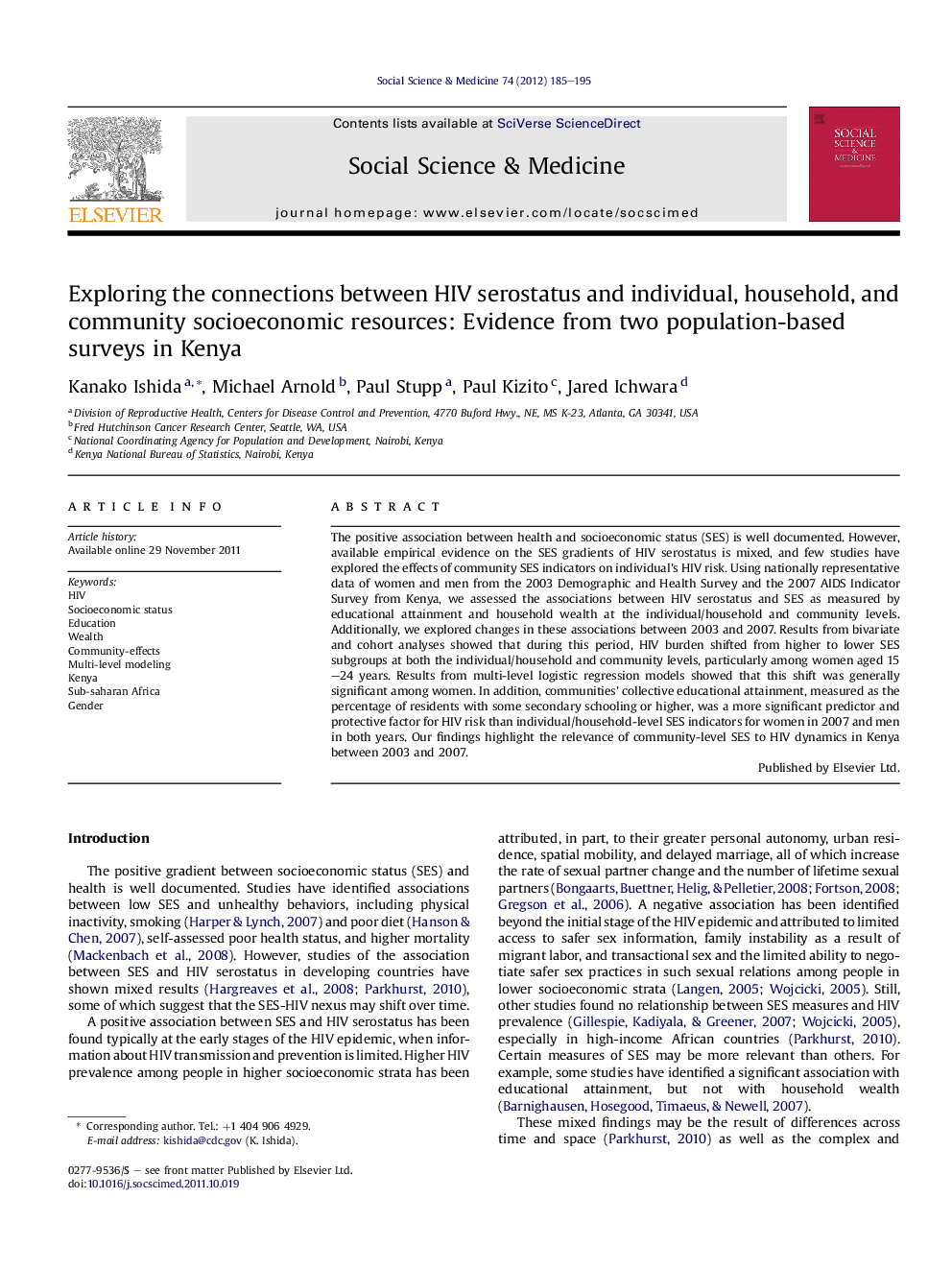| Article ID | Journal | Published Year | Pages | File Type |
|---|---|---|---|---|
| 952631 | Social Science & Medicine | 2012 | 11 Pages |
The positive association between health and socioeconomic status (SES) is well documented. However, available empirical evidence on the SES gradients of HIV serostatus is mixed, and few studies have explored the effects of community SES indicators on individual's HIV risk. Using nationally representative data of women and men from the 2003 Demographic and Health Survey and the 2007 AIDS Indicator Survey from Kenya, we assessed the associations between HIV serostatus and SES as measured by educational attainment and household wealth at the individual/household and community levels. Additionally, we explored changes in these associations between 2003 and 2007. Results from bivariate and cohort analyses showed that during this period, HIV burden shifted from higher to lower SES subgroups at both the individual/household and community levels, particularly among women aged 15–24 years. Results from multi-level logistic regression models showed that this shift was generally significant among women. In addition, communities' collective educational attainment, measured as the percentage of residents with some secondary schooling or higher, was a more significant predictor and protective factor for HIV risk than individual/household-level SES indicators for women in 2007 and men in both years. Our findings highlight the relevance of community-level SES to HIV dynamics in Kenya between 2003 and 2007.
► Between 2003 and 2007 HIV burden became increasingly concentrated among lower socioeconomic groups in Kenya. ► The shift toward the positive association between socioeconomic status and HIV is more pronounced among women in Kenya. ► Communities' collective educational attainment is a significant protective factor for individual's HIV risk in Kenya.
